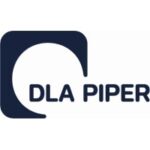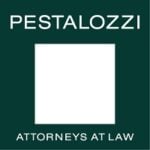-
How active is the securitisation market in your jurisdiction? What types of securitisations are typical in terms of underlying assets and receivables?
The securitization market is currently very active in the United States. According to data published by the Securities Industry and Financial Markets Association (SIFMA) as during 2024, there were approximately U.S. $2.182 trillion in principal amount of securities issued in securitization transactions during 2024. The vast majority of the new issuances during 2024 ($1.708 trillion) were mortgage-related securities issued by Freddie Mac, Fannie Mae and Ginnie Mae.
The remaining securitizations during 2024 were (i) non-agency mortgage-backed ($86.1 billion), (ii) auto ($160.555 billion), (iii) CDO/CLO ($81.752 billion), (iv) equipment ($32.334 billion), (v) credit cards ($18.096 billion), (vi) student loans ($8.766 billion) and (vi) other assets ($86.590 billion).
-
What assets can be securitised (and are there assets which are prohibited from being securitised)?
As a point of departure, almost any asset generating a payment stream can be securitized. The more diversified and constant the cash flow, and the fewer regulatory restrictions and licensing requirements imposed on the origination, ownership, security interest and sale of the relevant underlying assets, the easier the asset may lend itself to securitizations. However, there is currently no asset-class where securitization is outright prohibited.
As a general matter, there are more restrictions and licensing requirements in the consumer finance space than in the commercial lending space. Certain esoteric assets such as spectrum, some intellectual property rights and government concessions may be subject to limitations on ownership and restrictions on granting and enforcing security interests. Such limitations complicate securitizations of such assets, but typically will not prevent their securitization through an appropriately structured transaction.
Assets where the future cash flow may be impacted by the operations of the servicer or originator also present additional challenges in a securitization context. However, as long as the future cash flows can be sufficiently isolated from the servicer’s or originator’s operational risk such that the securitization will have the ability to continue to perform despite a bankruptcy of the servicer or originator, it is possible to securitize the relevant assets. Examples of such transactions include whole business securitizations, securitization of future oil and gas payment streams and securitization of future use-based payment rights.
-
What legislation governs securitisation in your jurisdiction? Which types of transactions fall within the scope of this legislation?
There are a number of different laws and regulations that together govern key aspects of securitizations. These include (a) the Bankruptcy Code, (b) the Uniform Commercial Code (the “UCC”), (c) the Securities Act of 1933, as amended (the “Securities Act”), (d) the Securities Exchange Act of 1934, as Amended (the “Exchange Act”), (e) the Investment Company Act of 1940, as amended (the “Investment Company Act”), and (f) where the sponsor or seller of the relevant asset, derivatives counterparty or investor in a securitization is a bank, the Federal Deposit Insurance Act (the “FDIA”), the Volcker Rule and the applicable bank capital regulations.
The Bankruptcy Code or other applicable insolvency regime, such as receivership or conservation under the FDIA for banks, together with the applicable state contract law, will inform requirements for ensuring that the sale of the relevant assets to the securitization SPV as well as the bankruptcy remoteness of the securitization SPV from that of its affiliates, will be respected in case of insolvency proceedings against the relevant transferor or affiliate. In that context it is worth noting that the FDIA contains a safe harbour provision that allows for greater certainty that a transfer of assets to a securitization transaction will be respected by the FDIA acting as receiver or conservator in case of a bank insolvency. Insolvency laws will also inform the enforceability of contractual provisions that are triggered off the bankruptcy or financial condition of a contract party, such as “flip clauses” that were used to subordinate defaulting derivatives counterparties but were found to be unenforceable, even though many other rights under derivatives contracts were protected in a counterparty bankruptcy.
The UCC contains, amongst others, provisions relating to creation and perfection of security interests. The term “security interest” does not only capture the interests in personal property or fixtures that secure a payment or performance obligation but also captures any interest of buyers of account receivables, chattel paper, payment intangibles and promissory notes. As such, if the transfer of such property is not perfected in accordance with the UCC, the Securitization may end up losing the purchased assets to creditors of the seller, even if the transaction is otherwise respected as a true sale. The UCC also contains important contractual override provisions that relate to enforcement of waiver of defences language in commercial transactions as well as hell or high water clauses in financing leases that are often important for the ability to finance such assets through a securitization.
The Investment Company Act requires any entity owning “investment securities” having a value that exceeds 40% of such entities’ total assets (exclusive of government securities and cash items) to register as an investment company absent an applicable exemption. “Investment Securities” is a broad term that includes all securities and loans with some limited exceptions and would typically capture financial assets that are being securitized. The requirements and restrictions applicable to registered investment companies are incompatible with typical securitization structures. Consequently, it is important to structure the securitisation transaction to fit within one of the exemptions to having to register as an investment company. One exemption that was promulgated for the purpose of capturing securitisation transactions is set forth in Rule 3a-7 under the Investment Company Act. A second exemption is Section 3(c)(5) which may be available to a securitisation entity that is primarily engaged in the business of (i) acquiring receivables and other obligations representing all or part of the sales price of merchandise, insurance and services or (ii) making loans to manufacturers, wholesalers, retailers or prospective purchasers of merchandise, insurance and services or (iii) acquiring mortgage and other liens on and interests in real estate. A third exemption that traditionally has been broadly used, but currently is more of a fall-back is Section 3(c)(7) which exempts entities that restrict their investors to “qualified purchasers” and that do not publicly offer their securities. However, relying on the 3(c)(7) exemption may result in the securitization entity becoming a “covered fund” under the Volcker Rule unless it restricts its assets as required by the loan-only securitization exemption under the Volcker Rule. As part of the 2020 amendments to the Volcker Rule, this exemption was broadened to permit the loan securitization vehicle to also own up to five percent of assets in the form of certain debt securities that otherwise would be prohibited, but not asset-backed securities or convertible debt securities. Banks are subject to restrictions in their dealings with covered funds, and banking entities are generally not permitted to being a sponsor of, or holding an “ownership interest” in, covered funds. Ownership interests includes any equity or any instrument reflecting the equity performance of the funds and until October 1, 2020, also captured any interest that has the right to vote for replacement of the manager outside an event of default or acceleration event, even if such right only arises as a result of a manager replacement event. As such, since the junior most tranches of a securitization reflect the equity performance securitization and the senior most tranches typically have the right to replace the manager in case of a manager termination event, the net effect has been that U.S. banking entities have been restricted from sponsoring or investing in securitizations that are “covered funds”. However, on October 1, 2020 a number of changes relating to covered fund exemptions, the ability of banks to deal with covered funds and the definition of ownership interest went into effect. Amongst others, these amendments provide a “safe harbour” for certain senior debt interest not to be deemed an ownership interest for purposes of the Volcker Rule, and also clarifies that, subject to certain conditions, participating in removal or replacement of a manager due to events that trigger creditor rights also do not amount to an “ownership interest”. These changes, together with the amendments to the “loan-only” securitization exemption, will potentially have a significant positive impact on the future development of CLOs, which traditionally have been one of the principal securitization types relying on the 3(c)(7) exemption under the Investment Company Act.
The Securities Act governs the offer and sale of “securities”, which is broadly defined and includes notes, stocks, bonds, debentures, investment contracts and any instrument commonly known as a security. Absent an available registration exemption, any offer and sale of securities has to be made pursuant to a registered offering. The Exchange Act provides the SEC with broad powers to regulate various market participants, prohibit certain types of conduct in the market and require certain periodic reporting. Registered offerings of asset-backed securities are subject to the disclosure requirements set forth in Regulation AB II as further detailed below and the Exchange Act imposes periodic reporting requirements for securities sold in a registered offering. The Exchange Act and rules promulgated thereunder also imposes certain requirements applicable to all securitizations including those issued in a private placement. Such generally applicable requirements include risk retention as set forth in Regulation RR, furnishing periodic reports of certain demands for repurchases and replacement of assets to the SEC on Form ABS-15G, and the furnishing to the SEC on Form ABS-15G the conclusions and findings of third party due diligence providers at least five business days prior to the first sale of the asset-backed securities. The Exchange Act also imposes a requirement to post all information provided to rating agencies hired to rate the securitization transaction to a password protected website (a so-called 17g-5 website) that may be accessed by to all Nationally Rated Statistical Ratings Organizations (“NRSROs”) at the same time such information was provided to the rating agency. The Exchange Act also regulates broker-dealer activities and restricts broker-dealers from providing price quotations for private securities outside a national securities exchange unless certain periodic information about the issuer and the offering is made available to the public. However, as set forth in a no-action letter from the SEC from November 22, 2024, this restriction does not apply to fixed income securities that meet certain requirements. For ABS securities, this means that the restriction on broker-dealers providing price quotations will not apply so long as the asset-backed issuer continues to comply with its requirements under the related transaction agreements to make ongoing information regarding the ABS and the related pool assets available to security holders directly or through the trustee, in the manner and to the extent required under the transaction agreement.
The SEC also recently adopted Rule 192 under the Securities Act, which prohibits a securitisation participant from, directly or indirectly, entering into a “conflicted transaction” between the time when it has reached an agreement that such it will become a securitisation participant with respect to an ABS and ending one year after the date of the first closing of the sale of the relevant ABS. Whether a transaction is a “conflicted transaction” under the rule depends on whether the transaction falls within one of the enumerated types specified in the rule and if so, whether “there is a substantial likelihood that a reasonable investor would consider the relevant transaction important to the investor’s investment decision, including a decision whether to retain the asset-backed security.” The types of transactions that would fall within the ambit of a “conflicted transaction” are: (i) a short sale of the ABS; (ii) The purchase of a CDS or other credit derivative pursuant to which the securitization participant would be entitled to receive payments upon the occurrence of specified credit events with respect to the ABS; or (iii) the purchase or sale of any financial instrument (other than the relevant ABS) or entry into a transaction that is substantially the economic equivalent of such short sale or derivative transaction.
However, there are important exceptions to this rule that include (1) risk-mitigating hedging activities conducted in accordance with the conditions specified in the rule in connection with and related to individual or aggregated positions, contracts, or other holdings of the securitization participant, including those arising out of its securitization activities, such as the origination or acquisition of assets that it securitizes, (2) purchases or sales of ABS made pursuant to, and consistent with, commitments of the securitisation participant to provide liquidity for the ABS, and (3) bona fide market-making activities that satisfy conditions specified in the rule. The Rule also contains a safe harbour for certain foreign transactions. In an important change from the originally proposed rule, the SEC has clarified that the initial issuance of a synthetic ABS will be eligible for the risk mitigating hedging activities exception thereby allowing for use of synthetic ABS as a hedging tool for existing, identifiable positions, contracts and holdings of the securitisation participant. However, outside the hedging exemption, the rule is likely to significantly restrict securitisation participant’s ability to enter into synthetic securitisations and economically similar transactions during the restricted period and it is worth noting that the rule contains a broad anti-circumvention provision that has the potential for extending the prohibitions under the rule to other transaction structures that are used to bet against the performance of a financial asset.
The bank capital rules contain a number of provisions and criteria relating to the risk weights resulting from synthetic and traditional securitisation exposures that have the potential effect of either greatly reducing (in case of senior securitisation exposures) or increasing (in case of junior securitisation exposures) the risk-weighted allocation of capital required for such exposures which thereby have the potential for influencing the structuring of securitisation transactions.
Finally, the Commodities Exchange Act was amended as part of the Dodd-Frank Act to regulate “swaps” (i.e. derivatives) other than “securities based swaps”. While synthetic securitizations in many circumstances can be structured to fall within the definition of “securities based swaps” such that they are regulated by the SEC rather than the Commodities Futures Exchange Commission (the “CFTC”), certain typical derivatives such as nth to default credit default swaps, interest rate swaps and foreign currency swaps will likely fall within the definition of swaps that are regulated by the CFTC. Any special purpose entity that enters into such swaps will, absent an exemption from the CFTC, be a “commodity pool” subject to additional disclosure obligations and will potentially require the manager to register and become subject to regulation as a commodity pool operator, which are typically not well suited for securitization structures. As such, any use of derivatives by any securitization entity will typically be limited to transactions where derivative is not regulated by the CFTC or where the CFTC has provided an applicable exemption from the commodity pool requirements.
-
Give a brief overview of the typical legal structures used in your jurisdiction for securitisations and key parties involved.
Securitisations in the U.S. involve, in their most basic form, the issuance of securities by an SPV to investors, the proceeds of which will be used by the SPV to purchase the underlying assets. Income generated by those assets will be applied towards periodic payments of interest and principal on the issued securities, and the investors will typically benefit from a security interest in the assets of the SPV granted to the indenture trustee for the benefit of the noteholders. The transaction structure will also typically include a servicer or manager who will act on behalf of the issuer SPV. This structure is, for example, typically used in open market CLOs.
Other structures for securitization include:
- a two-tiered securitization structure where one securitization SPV (typically in the form of a Delaware Statutory Trust) acts as issuer with an additional securitization SPV (typically in the form of a Delaware limited liability company) acts as depositor, i.e. an intermediate transferor that purchases the underlying assets in a true sale and transfers those assets to the issuer. The two SPVs are structured such that they are both bankruptcy remote from other affiliates, but not necessarily bankruptcy remote from each other. This structure facilitates the transfer of assets into and out of the securitization and is typically used in securitizations of consumer loans, auto loans and equipment leases amongst others. Other key parties include the originator of the underlying loans and the sponsor of the securitisation. The sponsor organizes and initiates a securitization transaction by selling or transferring the relevant assets directly or indirectly through a depositor to the issuing entity and typically also acts as the servicer for the transaction but could be another affiliate of the Depositor. In some of these securitizations a back-up servicer will also be identified and be part of the transaction from the get-go.
- a master trust structure, which involves setting up a master trust that can issue different series of securities with all such series being collateralised by a pro-rata interest in a common pool of assets. This structure is typically used in dealer floor plan securitizations. A further variant of this structure is used in credit card securitizations, where the receivables from credit card use are continually transferred to a master trust, and are purchased from there by securitization SPVs. As the relevant receivables repay, the Securitization SPV will then purchase new receivables from the Master Trust and the Master Trust will have funds available to purchase newly created receivables. The parties in these transactions are similar to the prior structure except that the master trust will take the place of the depositor.
- a synthetic securitization structure where the performance risk of the underlying asset is transferred to an SPV through a credit default swap or other derivative instrument. The issuer SPV will issue securities similar to other securitizations, but instead of using the proceeds to purchase the relevant securitized assets, the proceeds will instead be invested in permitted investments. The SPV will apply the income it receives from the derivatives and the other permitted investments to service its obligations under the issued notes and otherwise make required payments similar to a typical cash flow investment. If a payment is due by the securitization SPV under the derivative or other instrument that synthetically transfers the credit risk of the reference assets, the SPV will sell a portion of the Permitted Investments and use the proceeds to make sure payment. The key parties in these securitizations will be similar to the first securitization outlined above, but will in addition include one or more derivative counterparties that may or may not be the originators or owners of the underlying assets.
-
Which body is responsible for regulating securitisation in your jurisdiction?
The SEC is the principal authority responsible for administering and enforcing the Securities Act, the Exchange Act and the Investment Company Act. The SEC possesses broad jurisdiction throughout the U.S. and abroad. In addition, the Financial Industry Regulatory Authority (FINRA), a self-regulatory organisation with authority over broker-dealers, is also an important regulatory player in the market. For example, Rule 461 of the Securities Act requires a statement of no objection from FINRA before a public offering becomes effective.
Other important regulators include the Department of the Treasury, the Office of the Comptroller of the Currency (OCC), the Board of Governors of the Federal Reserve System (the Federal Reserve) and the FDIC (collectively the banking agencies) as well as the Federal Housing Finance Agency and the Department of Housing and Urban Development (collectively the housing agencies). The banking agencies, the housing agencies and the SEC have jointly issued the risk retention rules that apply to asset-backed securities.
Separately, the FDIC has promulgated securitization safe harbour rules that establishes securitization criteria where the FDIC, when acting as receiver or conservator of an insured depositary institution, will not exercise its power to repudiate contracts to recover or reclaim financial assets transferred in connection with securitization transactions.
Each state also has its own securities laws, referred to as ‘blue sky laws’, which may come into play as part of an offering or enforcement. States will be pre-empted from regulating securities transactions relating to “covered securities” within the meaning of Section 18 of the Securities Act, and the blue sky laws themselves usually include certain exemptions outside the covered securities context. As such, the state blue sky laws play less of a role in the registration or qualification requirements in securitisation offerings, but the pre-emptions do not override the anti-fraud provisions of states’ securities laws and, therefore, blue sky laws may be applicable in enforcement actions.
-
Are there regulatory or other limitations on the nature of entities that may participate in a securitisation (either on the sell side or the buy side)?
On the buy side, the type of entity that may participate in a particular securitization will depend primarily on the offering, the relevant ABS, and the applicable Investment Company Act exemption. The Issuer may, for example, restrict pension plans from investing in the securitization equity or in any non-investment grade tranches in order to protect against the securitization itself becoming subject restrictions applicable to pension plan assets. On the other hand, there will typically be no investor restrictions placed on the purchase of investment grade debt securities issued in a registered offering. If the securities are offered in a Rule 144A private placement, then investors will normally be limited to “qualified institutional buyers” which, as a general matter, are investors that own and invest on a discretionary basis at least $100 million ($10 million in case of dealers) in securities of unaffiliated entities. The securitization may also offer securities in a private placement to “accredited investors,” which would allow investments by natural persons that individually or jointly with their spouse have a net worth of at least $1 million or have earned at least $200,000 individually or $300,000 jointly with their spouse, for each of the past two years with an expectation to make at least that amount in the current year as well as entities that have total assets in excess of $5 million or another enumerated group of institutions). To the extent the securities are issued in in a foreign offering in reliance on Regulation S, they may be purchased by investors that satisfy the requirement of a “non-US Person”. The definitions of “accredited investor” and “qualified institutional buyer” were further expanded, effective December 8, 2020, to capture additional investors deemed to have sufficient knowledge and expertise to participate in investment opportunities that are not subject to the requirements and protections of a registered offering.
In addition to the Securities Act investor restrictions outlined above, there may be additional requirements imposed under the applicable Investment Company Act exemption. As such, Section 3(c)(7) entities must generally limit their investors to “qualified purchasers,” a term that as a rule of thumb requires net investable asset of at least $5 million for individuals and certain family companies, and at least $25 million for other entities. Issuers relying on Rule 3a-7 must take care to restrict investments in non-fixed income securities to qualified institutional buyers, and investments in below investment grade fixed income securities to institutional accredited investors or qualified institutional buyers.
As noted above, banks are prohibited under the Volcker rule from owning “ownership interests” in covered funds, which could restrict them from investing in certain tranches of securitizations that are deemed to be “covered funds” for purposes of the Volcker Rule.
On the sell side, please refer to section 14 below for the issuer. Depending on the asset class, there may be certain licensing requirements on the servicer of the relevant underlying asset and purchasers that act in a broker-dealer capacity, including as initial purchaser in a 144A transaction or as an underwriter in a registered offering, will be subject to a number of requirements and obligations under the securities laws the same as for any other securities offering.
-
Does your jurisdiction have a concept of “simple, transparent and comparable” securitisations?
The United States has not implemented the “simple, transparent and comparable” securitization concept as such.
-
Does your jurisdiction distinguish between private and public securitisations?
As noted above, US securities regulations distinguish between registered offerings, also referred to as public offerings, and offerings that are exempt from registration, often referred to as private placements. The distinction matters in terms of restrictions on the investors that may participate in the relevant offering (as discussed in question 6 above), the amount and type of disclosure, subsequent reporting requirements, as well as relevant eligibility criteria and securitization structure. The liability and applicable defences also vary between the two types of offerings.
-
Are there registration, authorisation or other filing requirements in relation to securitisations in your jurisdiction (either in relation to participants or transactions themselves)?
If the issuer or underwriter of any asset-backed security that will be rated by a nationally recognized statistical rating agency has obtained a third-party due diligence report for such security, then they must furnish Form ABS 15G, containing the findings and conclusions of such report, to the SEC by electronic filing at least five business days prior to the first sale in the offering.
Furthermore, the issuer or sponsor of any asset backed security for which the underlying agreements contain a covenant to repurchase or replace an underlying asset for breach of a representation or warranty, must file Form ABS 15G, providing details of the asset backed security and the relevant assets, at the end of each calendar quarter in which a demand has been made for such repurchase or replacement. If no demands for such repurchase or replacement has been made during a calendar year, then the issuer or sponsor must confirm this by filing Form ABS 15G.
Any public offering of asset-backed securities requires compliance with detailed disclosure requirements and the filing of a registration statement with the SEC. ABS offerings that qualify for shelf registration must be filed on Form SF-3 and other registered ABS offerings must be filed on Form SF-1.
Issuers of ABS offered and sold in a registered offering will be required to make periodic filings of an annual report on Form 10-K and any updates regarding current events on Form 8-K as well as Issuer Distribution Reports on Form 10-D.
As noted above, Exchange Act Rule 15c2-11, restricts broker-dealers from publishing or submitting quotes for fixed income securities unless certain information is made available by the Issuer.
-
What are the disclosure requirements for public securitisations? How do these compare to the disclosure requirements to private securitisations? Are there reporting templates that are required to be used?
The disclosure requirements for public offerings of asset-backed securities are set forth in Regulation AB II and the ABS-specific registration statement forms, Forms SF-1 and SF-3.
Form SF-3 requires disclosure of certain shelf-eligibility requirements and certain transaction eligibility requirements, as well as detailed disclosure about the offering itself whereas Form SF-1 does not require shelf eligibility disclosures but otherwise requires similar information about the offering.
Required provisions of the prospectus includes:
- certain information that must be included on the cover pages (table of contents, dealer prospectus delivery obligation, transaction summary, risk factors, ratio of earnings to fixed charges);
- principal use of the net proceeds;
- the principal underwriters, if applicable, their role and any material relationships with the issuers;
- the names, roles and other information about the principal transaction parties (sponsors, depositors, issuing entities, servicers, trustees and other transaction parties, originators, significant obligors of pool assets, legal proceedings, and affiliations and certain relationships and related transactions);
- various information, including statistical information, of the pool assets;
- various asset-level information required in Schedule AL;
- information about the issued securities;
- the structure of the transaction (including flow of funds);
- credit enhancements and other credit support;
- information about derivatives and the derivatives counterparty (if applicable);
- certain tax matters, including the tax treatment of the ABS under federal income tax and the material tax consequences of purchasing, owning and selling the ABS;
- description of reports to be delivered to the investors;
- any required ratings;
- static pool information (which may be filed on Form 8-k and incorporated by reference); and
- any interest or connections of named experts.
Amongst the required information in the prospectus is:
- the name of each originator, unless at least 90% of the total pool assets are originated by the sponsor or its affiliates;
- the financial condition of any sponsor or originator that is contractually obligated to repurchase pool assets for breach of any representation or warranty;
- the economic interest of each of the sponsor, servicer and each originator of 20% or more of the pool assets;
- a description of the provisions in the transaction documents governing modification of pool assets and the effects such modifications have on the cash flows from the pool;
- a narrative description of the static pool information, including any key differences between the static pool and the securitised pool; and
- if the relevant offering is subject to credit risk retention, then there will be additional disclosure required in the prospectus under the heading “Credit Risk Retention.”
The following information must be included in the prospectus by reference: (i) any preliminary prospectus filed as part of the shelf and (ii) the required asset-level disclosure. The required asset-level disclosure must be provided in a standardised and tagged XML format and filed on the SEC’s electronic filing system on Schedule AL and additional supplemental information can be filed through Form ABS-EE, which may incorporate by reference information filed by third parties, if applicable.
Issuers of asset-backed securities sold in a public offering must provide periodic reporting, annually on Form 10-K, in connection with each payment date on Form 10-D and upon the occurrence of certain material events, on form 8-K. Form 10-K is an annual report requirement, which is generally required of all registered issuers. However, for ABS issuer certain otherwise required information may be omitted and instead the report must contain certain information required under Regulation AB II, including:
- financial information relating to significant obligors (representing 10% or more of the asset pool);
- financial information about any entity or group of affiliated entities providing enhancement of support;
- legal proceedings pending against the sponsor, depositor, trustee, issuing entity or servicer;
- information about certain affiliate relationships;
- compliance with servicing criteria; and
- related servicer compliance statement.
Form 10-D must provide distribution and pool performance information, and disclosure of legal proceedings, sales of securities, defaults, voting information for holders, updates to report on significant obligors on pool assets, information about significant enhancement providers and certain other information.
-
Does your jurisdiction require securitising entities to retain risk? How is this done?
The SEC, the banking agencies and the housing agencies described in question 5, have promulgated risk retention rules that generally require sponsors of asset-backed securities to retain risk as specified in the rules, unless the transaction falls within one of the specified exemptions.
The three generally permissible methods of risk retention available to all securitisations are:
- retention of an eligible vertical interest, by holding at least 5% of each class of “ABS interests” issued by the issuing entity;
- retention of an eligible horizontal interest, by holding a residual interest equal to at least 5% of the “fair value” of all ABS interests issued by the issuing entity (determined in accordance with US GAAP); and
- retention of a combined (or “L shaped”) interest, by holding a combination, in any proportion, of an eligible vertical interest and an eligible horizontal interest such that the sum of the fair value of the retained horizontal interest (as a percentage of all ABS interests) and the percentage retained of each class of “ABS interests” is at least 5%.
In addition, there are specialised forms of risk retention available for revolving pool securitisations, certain asset-backed commercial paper (ABCP) conduits, CMBS, Federal National Mortgage Association and Federal Home Loan Mortgage Corporation ABS, open-market CLOs and qualified tender bonds each with accompanying disclosure requirements.
There are a number of exemptions from the risk retention requirements available. These include certain securitizations (i) of loans that satisfy specified underwriting standards, including qualified residential mortgage loans, qualifying commercial loans, qualifying commercial real estate loans and qualifying automobile loans, (ii) backed by the U.S. government, (iii) of U.S. government issued or guaranteed debt, (iv) of agricultural loans, (v) of state and municipal obligations, (vi) of qualified scholarship funding bonds, (vii) that are resecuritisations where the underlying assets comply risk retention requirements, (viii) of seasoned performing loans, (ix) of public utility securitizations, (x) of community-focused loans, and (xi) of three to four unit mortgage loans.
There is also a safe-harbour exemption for certain foreign related transactions where (i) both the issuer and the sponsor are not U.S. persons, (ii) the sale of the ABS are not, and are not required to be, registered under the Securities Act, (iii) no more than 10% of the value of the issued securities are sold or transferred to or for the account of U.S. persons, and (iv) no more than 25% of the underlying assets are acquired from an office of branch of the sponsor or issuer located in the US or a majority-owned affiliate of the sponsor or issuer that is organized in the United States.
The risk retention rules, purport to also require managers of so-called “open market CLOs” (being CLOs that acquire their assets in arms-length negotiated transactions from the open market, as opposed to balance sheet CLOs that are created directly or indirectly by the originator or original holders of the underlying securitized loans). However, in 2018, the United States Court of Appeals for the District of Columbia held that collateral managers of open market CLOs are not subject to risk retention, reasoning that such managers have no current exposures to retain but would instead be required to acquire additional assets to generate additional exposure that they were then required to hold, which is counter to the plain meaning of “retain”.
The risk retention rules allow for the risk to be held by the sponsor or a majority-owned affiliate of the sponsor and may, in certain circumstances, also permit a portion of such risk retention to be allocated back to the originator. The required holder of the retained risk will be restricted from hedging or transferring such risk and will only be permitted to finance such risk retention securities with full recourse to the sponsor or the relevant majority-owned affiliate, as applicable. The restrictions on hedging and transferring risk for securitizations other than residential mortgages will continue until the later of (x) the date on which the total principal obligations under the ABS interests issued in the securitization have been reduced to 33% of the principal amount at closing and (y) the second anniversary of the closing of the securitization transaction. For residential mortgages the restrictions on hedging and transfer will expire on the later of (i) the fifth anniversary of the closing date and (ii) the first to occur of the seventh anniversary of the closing date and the date on which the outstanding principal amount of underlying mortgages have been reduced to 25% of the closing date balance.
-
Do investors have regulatory obligations to conduct due diligence before investing?
Investors in U.S. securitisations currently do not have any regulatory obligations to conduct due diligence. However, underwriters in a public offering will typically conduct due diligence in order to avail themselves of the due-diligence defence to the strict liability for any material misstatement or omissions in the registration statement that they otherwise would be subjected to under Section 11 of the Securities Act. It is also typical for the initial purchaser in 144A offerings and certain other private placements to establish as similar due diligence defence against liability that otherwise potentially could be asserted in such offerings and to satisfy the SEC’s gatekeeping requirements for broker-dealers.
-
What penalties are securitisation participants subject to for breaching regulatory obligations?
The penalties that securitization participants may be subject to for breaching regulatory obligations will vary depending on the type of breach, the party bringing the action and the scienter or culpability of the breaching party.
The SEC has enforcement authority in case of any violations of the securities laws and regulations, including disclosure requirements and risk retention requirements. As such, the SEC may issue permanent or temporary cease-and-desist orders and seek civil monetary penalties up to $500,000 per act for any entity and $100,000 per act for any natural person, subject to periodic inflation adjustment (such that the inflation adjusted limits currently are $236,451 for natural persons and $1,182,251 for other persons). The SEC may also prohibit persons from acting as director or officer of an SEC-registered company and strip a person of its SEC registrations. The SEC could also expand its reach to “control persons” (subject to such control person’s defence of acting in good faith or not inducing the relevant act).
Disclosure violations or failing to comply with registration requirements could be grounds for SEC enforcement and could also give rise to a private cause of action under Section 10(b) of the Exchange Act (including Rule 10b-5 thereunder). In a registered offering, disclosure violations may give rise to liability for the issuer and any underwriter under Section 11 of the Securities Act. There is no scienter requirement in that context, though the underwriter may be able to assert a due diligence defence. Section 11 violations or failing to comply with registration requirements, will allow a purchaser of securities to choose to either rescind its purchase or receive damages from the seller pursuant to Section 12 of the Securities Act.
Section 11 does not apply to private offerings. However, the sponsor and issuer may still be liable under Exchange Act Rule 10b-5 for disclosure violations in private offerings if such violation was made with scienter including for damages in a private cause of action. The SEC can also bring enforcement action for disclosure violations under Section 17 of the Securities Act which only requires the showing of negligence rather than the higher scienter requirement for Rule 10b-5 violations.
Section 18 of the Exchange Act creates a private right of action for any person who purchases or sells a security at a price affected by any false or misleading statement or omission made in a document required to be filed with the SEC, subject to a defence that such statement was based on good faith and lack of knowledge. Violations of the Exchange Act may also result in equitable remedies under Section 29(a), including the right to rescind and void a contract made in violation of any provision of the Exchange Act.
Securities laws violations may also give rise to liability under state blue sky laws and the Department of Justice has the authority to bring criminal actions for wilful violations of the securities laws.
The FDIA provides banking agencies with broad enforcement powers for violation of the applicable banking laws and regulations, including the Risk Retention Rules. As such, the banking agencies may seek cease-and-desist orders requiring cessation and potential corrective actions. The banking agencies may also impose civil monetary penalties that can range between $5,000 and $1 million per day subject to inflation adjustment (such that civil monetary penalties currently range between $11,823 and $1,182,251 on an inflation adjusted basis), and they may seek to impose removal and prohibition orders against any “institution-affiliated party” (a potentially broad list of persons), which may remove and potentially bar the person from participating in the business of the relevant banking entity or other specified entities.
-
Are there regulatory or practical restrictions on the nature of securitisation SPVs? Are SPVs within the scope of regulatory requirements of securitisation in your jurisdiction? And if so, which requirements?
There are generally no regulatory restrictions on the nature of the securitization SPVs in the United States. As such, there are a number of different entities and different jurisdictions that can be used when forming the securitization SPV. That said, practical considerations typically narrow the type and jurisdictions of the issuer SPV. One key consideration is avoiding entity level taxes. Statutory trusts and limited liability companies that either are treated as disregarded entities or that have elected to be treated as partnerships for tax purposes would fit the bill, as would corporations in a foreign jurisdiction that does not impose corporate level tax. Foreign investors often prefer to invest through a corporation for tax reasons. However, U.S. corporations may be subject to entity level tax. Corporations also give rise to bankruptcy remoteness issues if the equity is owned by a non-bankruptcy remote entity, as evidenced by the bankruptcy of General Growth Properties, Inc. where several solvent bankruptcy remote SPVs filed voluntary bankruptcy petitions which the courts found to be permissible because of the fiduciary duty of corporate directors to their shareholders. Consequently, when foreign investors or other considerations call for a corporate SPV, such SPV will often be formed in an offshore jurisdiction that does not impose entity level taxes with the common equity of such entity held by a trust formed for the purpose of holding equity interests in bankruptcy remote entities. In contrast to corporations, limited liability companies typically allow for much more flexibility in redirecting or limiting its managers’ fiduciary duties. Statutory trusts are also more limited in terms of permitted and impermissible activities and are therefore also often used as issuing entities. As a practical matter, sponsors and investors also prefer that the relevant SPV is formed in a jurisdiction that is generally accepted in the market and that has a well-developed body of relevant law. As such, Delaware will typically be the jurisdiction of choice when forming securitization SPVs in the United States and the Cayman Islands has become a favoured jurisdictions for offshore SPVs such as those used in CLOs.
-
How are securitisation SPVs made bankruptcy remote?
Absent adequate protections, a securitization SPV could become subject to U.S. bankruptcy proceedings by means of a voluntary or involuntary bankruptcy petition as well as through application of the substantive consolidation doctrine. The transaction documents typically include non-petition clauses that restrict investors and other parties to the documents from commencing or joining any involuntary bankruptcy proceedings against the securitization SPV.
However, any prohibition against the SPV voluntarily filing for bankruptcy protection is unenforceable as against public policy. Instead, the risk of a voluntary filing is mitigated by other means. For example, as part of protecting against the SPV becoming insolvent, the transaction documents typically limit the SPV from engaging in activities unrelated to the transaction. The documents also typically include provisions specifying that the creditors party to the transaction will be paid only in accordance with the applicable priority of payments and that all claims against the SPV remaining after distribution of all assets in accordance with the transaction documents will be extinguished. Furthermore, it is typical to require the securitisation SPV to have an independent director or manager whose affirmative vote is required for any voluntary bankruptcy petition and specify that there will be no quorum for such vote unless the independent manager is appointed and included in the vote. The constitutive documents will also typically seek to clarify that the independent director’s fiduciary duty is to the SPV itself and not to the equity holders.
The risk of substantive consolidation varies between circuits, and as such it is important to build in adequate protections against substantive consolidation that would avoid that result regardless of where a potential bankruptcy proceeding would take place. For example, the Second Circuit and the Ninth Circuit rely on the so-called “Augie Restivo” test, where substantive consolidation depends on “whether creditors dealt with the entities as a single economic unit and did not rely on their separate identity in extending credit,” or “whether the affairs of the debtors are so entangled that consolidation will benefit all creditors.” The Third Circuit relies on a similar test formulated in “Owings Corning” where a proponent of consolidation must demonstrate that (i) the entities pre-petition “disregarded [their] separateness so significantly that their creditors relied on the breakdown of entity borders and treated them as one legal entity,” or (ii) post-petition the “assets and liabilities [of the entities] are so scrambled that separating them is prohibitive and hurts all creditors.” The DC Circuit. the Eighth Circuit and the Eleventh Circuit apply a more consolidation friendly test formulated in “in re Auto-Train Corp, Inc.”, pursuant to which the proponent of consolidation must make a prima facie case demonstrating (i) that there is “a substantial identity between the entities to be consolidated” and (ii) “that consolidation is necessary to avoid some harm or to realize some benefit.” Once the proponent for consolidation has made this showing, “a creditor may object on the grounds that it relied on the separate credit of one of the entities and that it will be prejudiced by the consolidation.” Courts outside the jurisdictions listed above will typically apply a multi-factor test to determine whether the securitization SPV should be substantively consolidated with an entity that is subject to bankruptcy proceedings.
A commonly cited list of such factors appears in the case of in re Vecco Constr Indus 4 BR 407, 410 (Bankr ED Va 1980):
- the degree of difficulty in segregating and ascertaining individual assets and liabilities;
- the presence or absence of consolidated financial statements;
- profitability of consolidation at a single physical location;
- the commingling of assets and business functions;
- the unity of interests and ownership between the various corporate entities;
- the existence of parent or intercorporate guarantees or loans; and
- the transfer of assets without formal observance of corporate formalities.
An additional factor, articulated by the Fourth Circuit Court of Appeals that has also been cited by a number of cases is whether, by ignoring the separate corporate entity of the subsidiaries and consolidating the proceeding with those of the parent corporation, all the creditors receive the equality of treatment which is the purpose of the bankruptcy act to afford.
The presence or absence of any one of these factors is not dispositive. Consolidation of financial statements, difficulty of separating assets, commingling of assets and profitability to all creditors are generally viewed as the more important factors.
As noted from the various tests above, in order to protect against substantive consolidation, the securitization transaction documents will include provisions aimed at ensuring that the securitization SPV and the relevant affiliates comply with corporate formalities, maintain their assets separately, inform their respective creditors of their separateness and of the fact that the SPVs assets are not available to the affiliate’s creditors and vice versa, and avoid intercompany guarantees or loans.
-
What are the key forms of credit support in your jurisdiction?
Key forms of credit support include, in no particular order, over-collateralization, subordination of junior tranches, cash reserves and excess yield on the underlying assets (which exceeds the yield required to service the ABS fixed income securities). Some securitizations include liquidity facilities which may be used to service the outstanding securities during periods of liquidity shortfalls. Guarantees of the ABS issuer’s obligation have become a less common form of credit support after the 2007/2008 financial crisis outside of Agency backed mortgage securitizations.
-
How may the transfer of assets be effected, in particular to achieve a ‘true sale’? Must the obligors be notified?
A true sale will be achieved if the characteristics of the transfer are predominantly those of a sale as compared to those of a loan. Therefore, the more numerous the sale characteristics, the greater likelihood that courts will respect the transfer as a sale. Conversely, if the characterizes of the transaction predominantly point to a secured loan, the transaction will be viewed as such. But not all characteristics are treated as equal. While recourse and collection risk are paramount indications of a secured loan, representations and warranties relating to the quality of the asset at the time of the sale support a sale. The parties’ intention as reflected in the economic substance and conduct is another key factor in determining whether a transfer is a true sale. Other less important factors will be considered as well, including, without limitation, the transferor’s continued administration and control of the assets. It is worth noting that Section 9-202 of the Uniform Commercial Code expressly provides that title to the asset is immaterial in making the determination of whether the transfer is a true sale.
Obligors do not need to be notified for a transfer of assets to qualify as a true sale. That is not to say that the delivery of a notice to the obligor informing such obligor of such sale or assignment is not useful. The Uniform Commercial Code provides that after such notification an account debtor is required to make payments to the purchaser of accounts receivable to discharge its payment obligation, thus giving the purchaser the right to enforce the payment obligation directly against the obligor. Further, once the obligor has been notified of the sale or assignment, such obligor will be prevented from exercising any set-off right it may have against the seller if such right accrued after the obligor received notice of the sale or assignment other than any recoupment rights resulting from the transaction that gave rise to the underlying contract.
-
In what circumstances might the transfer of assets be challenged by a court in your jurisdiction?
If a transfer predominantly bears the characteristics of a secured loan, the transfer may be challenged and re-characterized as such. Indications of a secured loans are many and include the transferor retaining recourse and collection risk, the transferor retaining the right to redeem the asset or to receive any surplus from the asset, the transferor’s continued administration and control of the assets, the transferor being a debtor of the transferee on or before the purchase date, the transferor’s ability to extinguish the transferee’s rights in the transferred assets by payments or repurchase by the transferor or from sources other than collections on the asset, and the transferor’s obligation to pay the transferee’s collection costs for delinquent or uncollectible financial assets, etc. Different factors also carry different weight. For example, the recourse and collection risk is often highlighted as the most important factor. Any one transfer does not need avoid all these characteristics in order to be respected as a true sale. It is not unusual for certain factors of a transfer to support a true sale and for other factors of the same transfer to be more consistent with a secured loan. So long as the indications of a sale outweigh indications pointing to a loan, the sale characterization should prevail.
-
Are there data protection or confidentiality measures protecting obligors in a securitisation?
A number of states have passed data privacy laws. There are also federal privacy laws that may apply in certain circumstances such as the protection of financial non-public personal information set forth in the Gramm-Leach-Bliley Act and the protection of healthcare and health insurance personal data set forth in the Health Insurance Portability and Accountability Act. Generally, confidential consumer information cannot be disclosed to third parties and may only be used for purposes for which such information was provided. Entities possessing confidential consumer information are generally required to safeguard such information from unauthorized access and disclosure. The asset-level disclosure obligations under SEC regulation AB II applicable to registered offerings were modified in light of privacy concerns to reduce the risk that information could be combined with other publicly identifiable information to “re-identify” the underlying consumers.
-
Is the conduct of credit rating agencies regulated?
Yes. Nationally recognized statistical rating organizations or NRSRO’s are regulated by the SEC. The Exchange Act and the rules promulgated by the SEC thereunder require, inter alia, that each NRSRO (i) disclose detailed set of records to the SEC, (ii) make certain information publicly available at no charge, (iii) post specific portions of its Form NRSRO on its website, (iv) maintain certain records for a period of three years, (v) furnish certain financial information periodically to the SEC, including audited financial statements within 90 days following year-end, and (vi) maintain and enforce written policies and procedures to prevent misuse of material non-public information as well as procedures designed to address conflicts of interests. The rules also prohibit NRSRO’s from engaging in certain abusive and anti-competitive practices. A breach of certain of these SEC rules can result in the suspension or revocation of an NRSRO’s registration.
-
Are there taxation considerations in your jurisdiction for originators, securitisation SPVs and investors?
Generally, the goal from a securitization tax perspective, is to achieve tax neutrality relative to the tax consequences of a traditional financing. Any tax costs will have to be identified and appropriately addressed in the structuring of the SPV. In some securitization transactions, the parties may seek to achieve specific tax goals, in which case the relevant transactions will often contain a number of additional features, restrictions or obligations intended to address such tax issues.
From the standpoint of the originator, the types of tax issues often considered include (i) whether the sale of a financial asset to a securitization SPV would be a taxable event that gives rise to an obligation to pay taxes (or the ability to deduct losses) relating to such financial asset; (ii) whether there are stamp taxes or transfer taxes resulting from transfers of the financial assets or collateral securing such assets; (iii) whether the choice of securitization entity and structure impacts the originator’s ability to deduct losses for bad debt and other similar losses; (iv) whether the securitization structure results in taxable income at the originator through servicing activities or through profits from the securitization entity; and (v) whether the originator will have any tax consequences from gains or losses resulting from credit enhancements.
The tax considerations from the standpoint of the issuer SPV include (i) selecting a structure, jurisdiction of formation and limitations on activities, as required to avoid entity-level taxation; and (ii) establishing operational parameters that reduce the risk of the SPV being taxed as a resident in any other jurisdiction than the ones considered under the transaction documents.
Investors seek to obtain (i) comfort that any debt investment in a securitization SPV will be recognized as such also for tax purposes and (ii) any potential reduction in cash flows resulting from any entity-level taxation of the SPV, among others.
-
To what extent does the legal and regulatory framework for securitisations in your jurisdiction allow for global or cross-border transactions?
The legal and regulatory framework for securitizations in the Unites States does allow for global and cross-border transactions. In fact, the US securities laws are far reaching and do not require much contact to apply. It is worth noting that global and cross-border transactions raise a few considerations from a tax perspective. First, cross-border transactions raise the question of withholding tax, as payments based on US-source income to foreign individuals and corporations are potentially subject to withholding tax. Interest paid or accrued by a typical securitization SPV to a foreign person will usually be exempt from withholding tax by virtue of falling within the “portfolio interest” exemption from withholding. In circumstances where that exemption does not apply, the withholding tax could still be reduced or eliminated by virtue of applicable income tax treaties. Second, the Foreign Account Tax Compliance Act (“FATCA”) imposes a withholding tax on certain payments (including interest in respect of debt instruments issued by a securitization SPV and gross proceeds from the sale, exchange or other disposition of such debt instruments) made to a foreign entity if the entity fails to satisfy certain disclosure and reporting rules. Third, if a foreign securitization issuer were to be engaged in US trade or business for US federal income tax purposes, it would become subject to US federal income tax and potentially to state and local income tax. This is why foreign securitization issuers tend to conduct their activities in accordance with detailed guidelines that are aimed at ensuring that they are not engaged in loan origination or otherwise treated as conducting a lending or other financial business in the United States.
-
How is the legal and regulatory framework for securitisations changing in your jurisdiction? How could it be improved?
The United States generally has a very flexible framework around securitizations which has allowed for the establishment of a very robust securitization market. The market has also gone through credit cycles that have stressed securitizations and have thereby generated important insights into the strength and weakness of various features and which has been reflected in various regulatory changes since the financial crises of 2007/2008.
A few areas where the current regulatory framework can be improved include:
- Revisiting some of the swaps rules and CFTC commodity pool exemptions to better align these rules and exemptions with the needs of securitization entities. For example, whereas the CFTC has provided commodity pool exemption to SPVs that comply with Investment Company Rule 3a-7, such relief should also be extended to securitizations that rely on other Investment Company Act registration exemptions. Also, the relief does not apply to credit default swaps, which means that synthetic securitizations that structure their risk transfer in the form of a single name CDS or CDS on a narrow-based securities index is regulated by the SEC and therefore permitted, whereas a CDS that is structured as an nth to default derivative on a pool of securities would not be feasible.
- Amending the “eligible guarantor” requirement in the U.S. Basel III capital adequacy regulations to expand the requirement that the relevant guarantor itself has issued unsecured investment grade debt to also allow for such investment grade debt to be issued by a holding company of the guarantor. As currently drafted, insurance companies are effectively prevented from acting as guarantors because as a regulatory matter insurance companies issue structurally subordinated debt through holding companies rather than directly from the insurer, in order to protect the seniority of insurance claims. It is, of course, prudent take lessons from the financial crises where monoline insurers and other insurers with overly concentrated exposures to securitizations became unable to make good on their insurance obligations. However, those concerns are addressed by two other prongs of the “Eligible Guarantor” definition. One of which requires a guarantor to have a creditworthiness that is not positively correlated with the credit risk of the exposure for which it has provide guarantees. The other requires the guarantor to not be “an insurance company engaged predominantly in the business of providing credit protection (such as a monoline bond insurer or re-insurer)”.
- Revising the requirement in Exchange Act Rule 17g-5 that requires simultaneous posting of all information provided to rating agencies engaged to rate an asset-backed security to a password protected website available to other rating agencies that may wish to rate the transaction. This is an administrative burdensome requirement that has not since its implementation in 2009 resulted in rating agencies independently rating securitization transactions. The SEC has recently signalled that it will reassess this rule.
A few areas where recent developments may impact ABS include:
- The impact on consumer-related securitizations of the March 19, 2024 decision by the Third Circuit that certain student loan securitization trusts were “covered persons” under the Dodd-Frank Act subject to the CFPB’s enforcement authority they engaged in student loan servicing and debt collection.
- Expansion of securitisations into new asset classes and as a means of providing capital and liquidity for the increasing volume of private credit lending activities.
-
Are there any filings or formalities to be satisfied in your jurisdiction in order to constitute a true sale of receivables?
While there is no filing or formality required per se for true sale as such, the uniform commercial code specifies that sale of receivables is to be treated as a form of security interest. This means that for a purchaser to ensure that it has priority over competing third party claimants to the receivables, the purchase of receivables will need to be perfected. As a practical matter, this means that a UCC financing statement will have to be filed against any seller that is located (or deemed located) in the United States. The perfection requirements for foreign sellers will depend on where the foreign seller is located based on the choice of law rules, and whether the laws of such jurisdiction generally requires information concerning the existence of a nonpossessory security interest to be made generally available in a filing, recording or registration system as a condition or result of the security interest’s obtaining priority over the rights of a lien creditor in respect of the receivables.
United States: Securitisation
This country-specific Q&A provides an overview of Securitisation laws and regulations applicable in United States.
-
How active is the securitisation market in your jurisdiction? What types of securitisations are typical in terms of underlying assets and receivables?
-
What assets can be securitised (and are there assets which are prohibited from being securitised)?
-
What legislation governs securitisation in your jurisdiction? Which types of transactions fall within the scope of this legislation?
-
Give a brief overview of the typical legal structures used in your jurisdiction for securitisations and key parties involved.
-
Which body is responsible for regulating securitisation in your jurisdiction?
-
Are there regulatory or other limitations on the nature of entities that may participate in a securitisation (either on the sell side or the buy side)?
-
Does your jurisdiction have a concept of “simple, transparent and comparable” securitisations?
-
Does your jurisdiction distinguish between private and public securitisations?
-
Are there registration, authorisation or other filing requirements in relation to securitisations in your jurisdiction (either in relation to participants or transactions themselves)?
-
What are the disclosure requirements for public securitisations? How do these compare to the disclosure requirements to private securitisations? Are there reporting templates that are required to be used?
-
Does your jurisdiction require securitising entities to retain risk? How is this done?
-
Do investors have regulatory obligations to conduct due diligence before investing?
-
What penalties are securitisation participants subject to for breaching regulatory obligations?
-
Are there regulatory or practical restrictions on the nature of securitisation SPVs? Are SPVs within the scope of regulatory requirements of securitisation in your jurisdiction? And if so, which requirements?
-
How are securitisation SPVs made bankruptcy remote?
-
What are the key forms of credit support in your jurisdiction?
-
How may the transfer of assets be effected, in particular to achieve a ‘true sale’? Must the obligors be notified?
-
In what circumstances might the transfer of assets be challenged by a court in your jurisdiction?
-
Are there data protection or confidentiality measures protecting obligors in a securitisation?
-
Is the conduct of credit rating agencies regulated?
-
Are there taxation considerations in your jurisdiction for originators, securitisation SPVs and investors?
-
To what extent does the legal and regulatory framework for securitisations in your jurisdiction allow for global or cross-border transactions?
-
How is the legal and regulatory framework for securitisations changing in your jurisdiction? How could it be improved?
-
Are there any filings or formalities to be satisfied in your jurisdiction in order to constitute a true sale of receivables?













